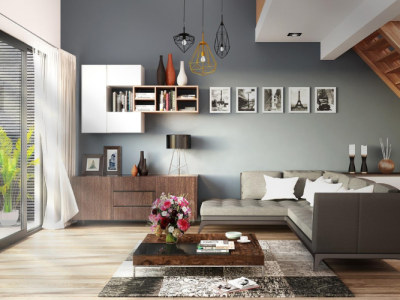Home entertainment has transformed dramatically over the past decade. With advancements in display technology, surround sound systems, and smart devices, it’s now possible to recreate a theater-like experience in your living room. One of the most impactful upgrades you can make is investing in a high-quality projector. In this guide, we’ll explore how to choose the perfect projector for your home theater, what features matter most, and why gamers and movie enthusiasts alike are turning to 4K projectors for the ultimate experience.
Why Choose a Projector Over a TV?
Before diving into features and specifications, let’s answer the question: why pick a projector instead of a large-screen TV?
- Screen Size Flexibility: Projectors allow you to scale up to 100 inches or more, something even premium TVs can’t easily match.
- Immersive Viewing: Bigger screens create a more cinematic feel, perfect for movies and sports.
- Space Efficiency: Modern projectors can be ceiling-mounted or placed on a small table, saving space compared to large TVs.
- Cost-Effectiveness: For extremely large screen sizes, projectors often provide better value than a comparable TV.
If you’re planning a dedicated home theater setup, a projector is almost always the superior choice.
What to Look for in a High-Quality Projector
When shopping for a projector, the sheer number of specs can feel overwhelming. To simplify the process, focus on these critical factors:
1. Resolution
For true cinematic quality, 4K resolution is essential. A 4K projector delivers 3840 x 2160 pixels, resulting in sharper images and more detail. If you’re aiming for a premium experience, look for models that offer native 4K rather than just “4K compatible.”
2. Brightness (Lumens)
Measured in lumens, brightness determines how well your projector performs in different lighting conditions. For dark rooms, 1,500–2,000 lumens may suffice. For rooms with ambient light, aim for 2,500 lumens or higher.
3. Contrast Ratio
A high contrast ratio enhances black levels and color depth, making scenes appear more vivid and lifelike.
4. HDR Support
High Dynamic Range (HDR) expands color and brightness range, delivering stunning visuals for movies and games.
5. Input Lag (for Gamers)
If gaming is part of your setup, prioritize a 4K gaming projector with low input lag—ideally under 16ms. This ensures smooth, responsive gameplay, especially for fast-paced titles.
Types of Projectors: Which One Is Right for You?
Different types of projectors suit different spaces and needs:
- Standard Throw Projectors: Best for large rooms where the projector can be placed far from the screen.
- Short Throw Projectors: Ideal for smaller spaces; they produce large images from a short distance.
- Ultra-Short Throw (UST) Projectors: Perfect for tight spaces and living rooms, sitting just inches from the wall.
For most home theaters, short throw or UST projectors are the most practical and versatile options.
Best Use Cases: Movies vs. Gaming
Your choice of projector depends on what you use it for most:
- Movies & TV Shows: Prioritize high contrast, HDR, and accurate color reproduction. The best 4K home theater projector often includes advanced features like dynamic tone mapping for stunning visuals.
- Gaming: Look for high refresh rates, low input lag, and strong brightness to handle both cinematic cutscenes and competitive play. A 4K gaming projector can deliver an immersive experience unmatched by traditional displays.
Setting Up Your Home Theater for Maximum Impact
Buying the right projector is just the first step. Here’s how to optimize your setup:
1. Choose the Right Screen
A proper projection screen enhances brightness and color accuracy compared to projecting on a plain wall. For a true theater feel, pick a screen size that suits your room and viewing distance.
2. Control Ambient Light
Even the best projectors struggle in bright rooms. Use blackout curtains or consider a projector with high brightness for daytime viewing.
3. Audio Matters
Visuals are only half the experience. Invest in a soundbar or surround sound system to complete your setup.
4. Positioning & Calibration
Ensure your projector is properly aligned and calibrated for color accuracy and optimal focus. Many modern projectors include auto-keystone correction and lens shift features for easier setup.
Common Myths About Projectors
Myth 1: Projectors are too expensive.
While premium models can be costly, there are many affordable options that deliver excellent 4K performance.
Myth 2: Projectors can’t work in bright rooms.
Modern projectors with high lumen ratings and ALR (Ambient Light Rejecting) screens can perform well even in moderate lighting conditions.
Myth 3: Gaming on a projector causes lag.
While older models had issues, today’s 4K gaming projectors are designed with low latency modes that rival high-end TVs.
Future Trends in Projection Technology
The future looks bright—literally. Laser projectors are becoming mainstream, offering better color, higher brightness, and longer life spans than traditional lamp models. Smart features like integrated streaming apps, voice control, and wireless connectivity are now standard in premium models. We’re also seeing early adoption of 8K-ready projectors, although 4K remains the sweet spot for price and performance.
Final Thoughts
Creating a home theater setup is one of the most rewarding upgrades for entertainment lovers. Whether you’re binge-watching the latest shows, hosting movie nights, or gaming with friends, a 4K projector takes the experience to the next level.
If you’re a cinephile, look for the best 4K home theater projector that delivers accurate colors, HDR support, and deep contrast. If gaming is your passion, invest in a 4K gaming projector with low input lag and smooth motion handling.
Whichever route you choose, a high-quality projector transforms your living room into a personal cinema—and that’s an experience no TV can match.












Comments